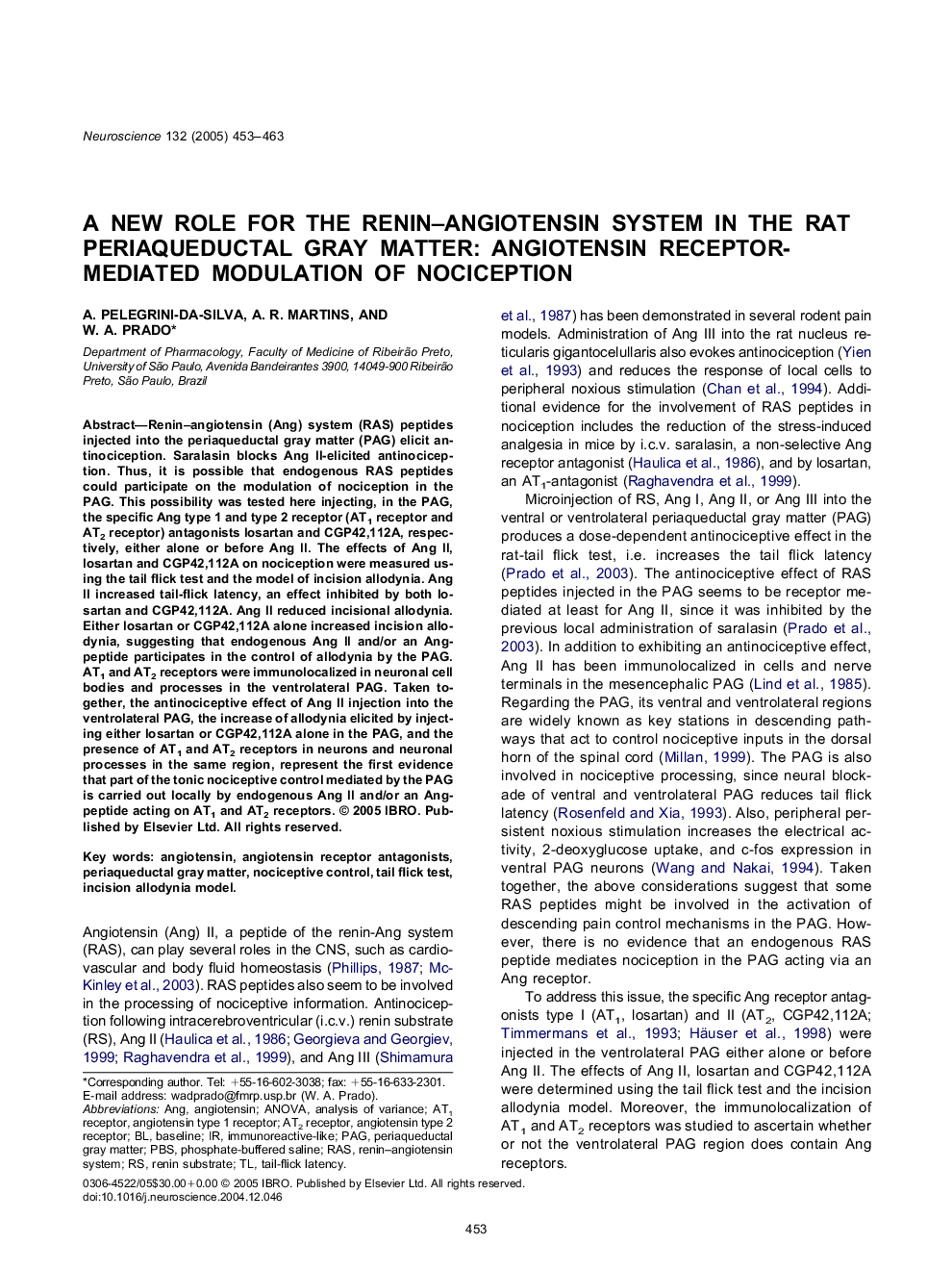| Article ID | Journal | Published Year | Pages | File Type |
|---|---|---|---|---|
| 9425652 | Neuroscience | 2005 | 11 Pages |
Abstract
Renin-angiotensin (Ang) system (RAS) peptides injected into the periaqueductal gray matter (PAG) elicit antinociception. Saralasin blocks Ang II-elicited antinociception. Thus, it is possible that endogenous RAS peptides could participate on the modulation of nociception in the PAG. This possibility was tested here injecting, in the PAG, the specific Ang type 1 and type 2 receptor (AT1 receptor and AT2 receptor) antagonists losartan and CGP42,112A, respectively, either alone or before Ang II. The effects of Ang II, losartan and CGP42,112A on nociception were measured using the tail flick test and the model of incision allodynia. Ang II increased tail-flick latency, an effect inhibited by both losartan and CGP42,112A. Ang II reduced incisional allodynia. Either losartan or CGP42,112A alone increased incision allodynia, suggesting that endogenous Ang II and/or an Ang-peptide participates in the control of allodynia by the PAG. AT1 and AT2 receptors were immunolocalized in neuronal cell bodies and processes in the ventrolateral PAG. Taken together, the antinociceptive effect of Ang II injection into the ventrolateral PAG, the increase of allodynia elicited by injecting either losartan or CGP42,112A alone in the PAG, and the presence of AT1 and AT2 receptors in neurons and neuronal processes in the same region, represent the first evidence that part of the tonic nociceptive control mediated by the PAG is carried out locally by endogenous Ang II and/or an Ang-peptide acting on AT1 and AT2 receptors.
Keywords
Related Topics
Life Sciences
Neuroscience
Neuroscience (General)
Authors
A. Pelegrini-da-Silva, A.R. Martins, W.A. Prado,
